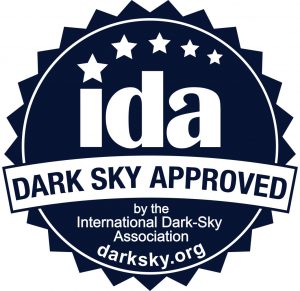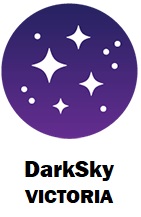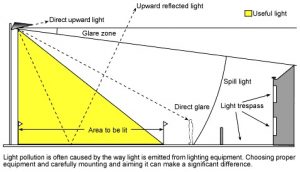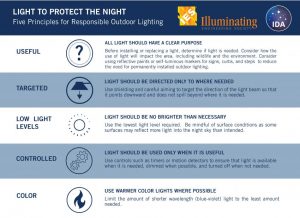 IDA List of Dark Sky Friendly Lighting
IDA List of Dark Sky Friendly Lighting
The knowledge surrounding Light Pollution is changing rapidly and how the Community responds at all levels is also changing.
LFA Guidelines Address Colour Temperature
With the advent of the LED, IDAVic is concerned about the potential negative effects of blue-rich white light, even from fixtures with proper shielding. You can find articles concerning the potential hazards of blue-rich white light sources on our Resources page. The scientific evidence has solidified around its conclusions.
The case against blue light is well founded with regard to discomfort glare, circadian rhythm disruption, light scattering, skyglow and biological system disruption in wildlife.
Outdoor lighting with high blue light content is more likely to contribute to light pollution because it has a significantly larger geographic reach than lighting with less blue light. In natural settings, blue light at night has been shown to adversely affect wildlife behavior and reproduction. This is true even in cities, which are often stopover points for migratory species. There is now evidence that blue light can damage cells in the human eye leading to macular degeneration over time.


